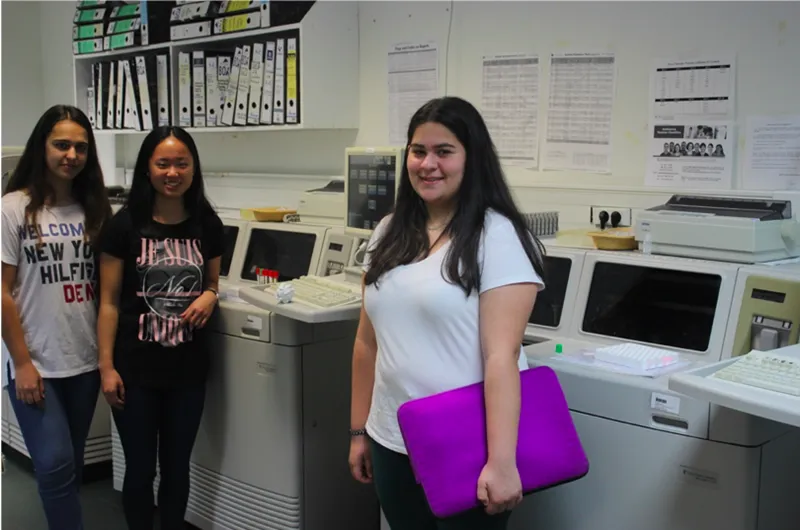Three students of the Santa María College of the Nazareth volcanoes have a project that breaks the current schemes in the Medicine Field
Last April 2017, the three students María Santana, Celia Hernández and Arapsun Rodríguez, who are in the third compulsory secondary education at the Santa María de los Volcanes-Nazaretde Arrecife, Lanzarote, launched project, launched a project, which to carry it outThe field of medicine would advance.The research comes with the idea of revolutionizing the health industry and breaking with the schemes of the future.
The project has been based on the study of the most common world chronic diseases (myocardial, cancer, COPD and diabetes);These affect 25% of the population.According to studies by the World Health Organization (WHO), in 2012 about 12.6 million people lost their lives because of these diseases.One of the most striking causes of these chronic pathologies is, the body's ability to generate antigens with the cells of our own system that attack our body.
The “Nanovaccine Technolution” research has focused mainly on type 1 diabetes, an autoimmune condition that stands out for being able to produce an infection or other trigger that causes insulin producing cells to error to error to the organism itself.Patients suffering from type 1 diabetes have a pancreas that do not secrete the insulin necessary for the body, so that without it, glucose accumulates in the blood instead of entering the cells and the body is unable to use this glucoseTo get energy.According to what is known so far, there is no treatment capable of avoiding diabetes, therefore María, Celia and Arapsun chose type 1 diabetes as the starting point of the investigation.
Type 1 diabetes has a genetic component, where it is the organism itself that attacks beta cells preventing them from producing insulin.Therefore, the form of the antigen would be studied, then two possible variants were developed.A first that would consist of 3D designing the lymphocyte-t that adheres the antigen to print it in a cell printer, which would subsequently introduce into the body by means of nanorobots that will strategically locate them and transfer them to the pancreas.It would be injected with Nanorobots because if it is introduced directly, the immune system would destroy them before they arrived at the pancreas.Thus, the antigen passes to the side will stick to these cells that will destroy them and will not attack the body, in this way, the Nanorobot will self -destruct and will be expelled by body fluids.The second alternative would try to design the cell in 3D in the same way as the antigen and that the nanorobots place it in the target cells as an plug, so they will not have where to adhere.
Deending even more in the project, the students had the opportunity to have different experts;Dr. Patricia Cabrera Acosta, as a digestive specialist at the Doctor Negrín de las Palmas hospital, saw the option of using “antigen imitators” more feasible, that is, exogenous antigens, which will block the place of union of the autoantigens of thepancreatic cells.Consider that the option of creating a cell that adopts the same form and genetically characteristics to the real so that it can be accepted by the immune system would be much more difficult to achieve.Don Javier Crespo Cano, technical manager of the Lanziten Lanzarote laboratory, valued in the same way that the project should develop the second option.
They say that curiosity is the emotional aspect that gives rise to exploration, research and learning, but everything is complicated when questions are transferred tofuture.The project opens new horizons that could see huge changes in the field of medicine.
Therefore, Nanovaccine is a project that will help all people who, due to genetics, are likely to develop diabetes disease, do not have to depend all of their lives on it."Nanovaccine Technolution" has great expectations of the future, is universal, and opens the doors to a new revolution in the field of medicine.


